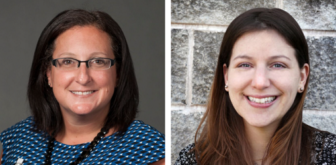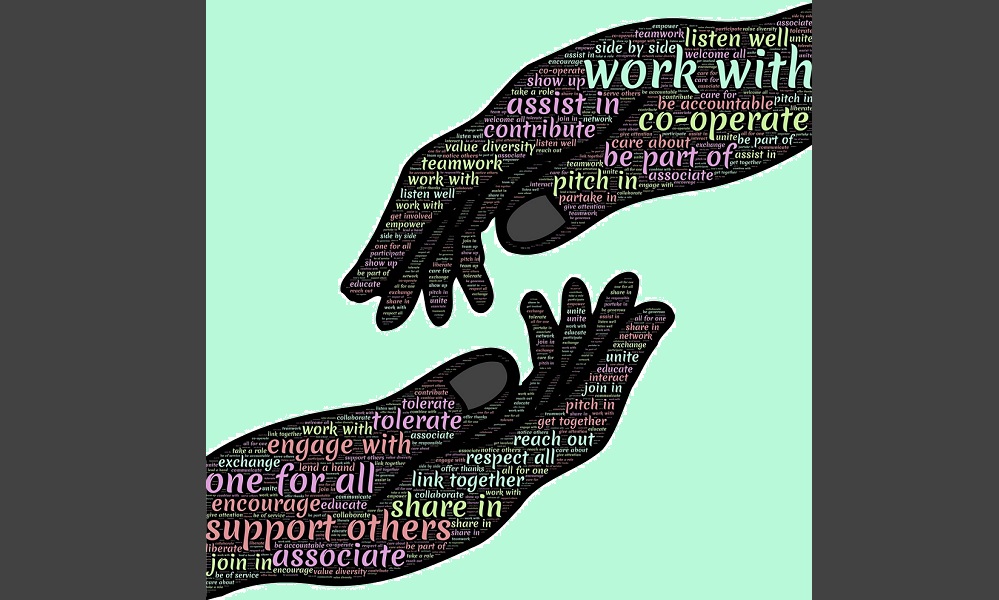
Helen Keller said it best, “Alone we can do so little; together we can do so much.”
It is not a secret that schools are feeling the pressure of being the “everything” for our students. Today, schools — specifically teachers — play the role of counselor, nurse, nutritionist, stylist, advisor, mentor, all while working to ensure our students are proficient in math, reading and writing. Administrators feel this burden as well, often playing roles like parent figures, disciplinarian, parent educator and family therapist.
So how are our schools able to do everything we need to do for our students with limited resources and the rising pressure of test scores and achievement? There’s no one answer, no magic number to call or book of solutions when there’s a problem. But what we do have is our community: the people, politicians, business, government agencies and nonprofits that also care about our community, which includes our school.
At New Foundations Charter School in Philadelphia, our network of partners is an essential piece of our caring community. We could not offer as many resources, opportunities and programs to our students and families without the diverse hands supporting our mission.
One example of partnership we’ve built throughout the years is with the Rock School for Dance Education through their Rock Reach program. This program allows New Foundations Charter School students to participate in four hours a week of dance education for free, in a time when funding for the arts is more and more limited. Comcast developed a shadow program with our high school students to visit and gain important insight in high-growth career pathways. We ask our parents to give back to the school in whatever way they are able — such as helping to organize fundraisers, share about their careers, donating goods, planning social events and chaperoning field trips.
The partnerships are not one-sided, but also focus on how we can support our partners’ work. It’s important that we see the assets that each other can bring to the table to work collaboratively to achieve our missions. The local deli across the street, Al’s Corner Deli, has supported our school through promoting and advertising our programs, hosting groups of students for tours. Our school uses them as our go-to lunch spot and primary caterer for all our events. Our local State Farm agent has supported us in safe driving campaigns, recognizing outstanding students, providing career guidance and internships and in turn, built relationships with our parents, many of whom have signed on with State Farm Insurance. Our partnerships with both of these businesses have provided a pipeline for prepared, competent and confident employees.
The Philadelphia Youth Network (PYN) has worked with New Foundations over the past 13 years. The relationship started with New Foundations hosting the WorkReady program for high school students — a summer work employment initiative in Philadelphia. As our programs grew and our relationship strengthened, we became consultants for high-quality programs and asked to host pilot programs as a model for the city. These programs fill a huge need for our students, and we are able to provide important context, feedback and student data to PYN — a collaborative reciprocal partnership that helps both organizations meet important goals.
High-quality partnerships, just like any relationship, take time and energy to build. Our time building partnerships has led us to some clear guidelines we follow and want to share. We urge you to look at these as lessons learned over the past 18 years.
- Communicate significance. To inspire prospective partners to get involved, communicate the purpose and scope of your event and program. Share your organization’s vision and mission, related accomplishments and successes, and the direction in which you want the event or program to go.
- Create buy-In in your own organization. Identify how a community partnership will supplement work you are already doing (i.e. draw connections to educational standards and curriculum). Solicit input from staff and participants who will be impacted by the community partnerships to foster a united, well-informed team.
- Identify your level of partnership. There are four partnership levels: communication, cooperation, coordination and collaboration. Each level reflects increasing levels of involvement and interaction and ranges from informal to more organized relationships. Decide which level you want to engage in based on your needs and goals.
- Identify partnership ambassadors. Think about who has an existing connection with the organizations you are trying to involve and would be likely to get a “yes” (i.e. board members may be best to reach out to other community leaders). Faculty, staff, parents and volunteers can serve as recruiters. Prepare them to make the “ask.”
- Define goals and desired outcomes. Be intentional about what you are looking for in your community partnerships. Work with your partners to explicitly define your shared goals and intended outcomes so that you know you are moving toward the same vision. Identify key individuals who share and can communicate this message to others.
- Clarify roles and responsibilities. Define clear roles and responsibilities for each partner by designating specific individuals who will serve as points of contact and carry out specific tasks. Communicate these often in different formats (i.e. email, phone, literature) to ensure that these shared understandings remain at the forefront.
- Inclusive decision-making. Community partners bring a wealth of knowledge and expertise. Through ongoing communication, provide opportunities for them to ask questions and voice their ideas about how they can integrate their practices into your events or programs to enhance ownership and empowerment among partners.
- Reciprocate the partnership. The partnerships that you develop can form the basis of long-term relationships. Find out what your community partner needs, evaluate the resources that you can offer and identify ways in which you can support them. Make yourself available to participate on partner committees or volunteer your time.
- Keep partners informed. Include your partners in your organizational community. Where appropriate, invite them to attend events and celebrations and include them on weekly or monthly newsletters to stay up-to-date on current news and information. This makes partners feel valued beyond the event or program to which they commit.
- Celebrate your community partners. Thank your partners for working with you. Share their contributions by publishing the event or program on your website or social media. Send them thank you cards or letters with pictures of the event or other sentiments. Create a sponsorship page displaying their logos or host a celebration to honor them.
Quality community-school partnerships don’t happen overnight, and they are not effortless, but the work to forge and nurture these partnerships will result in outcomes that are even better than imagined. So the next time you’re asked as a school or nonprofit to address a need that you don’t have the resources for — turn to your neighbors, community members and the officials who govern your city. If we all work together, we can succeed together.
FOR FREE RESOURCES ON SCHOOL-COMMUNITY PARTNERSHIPS, GO TO THE OST HUB.
Shira Woolf Cohen is the K-8 principal at New Foundations Charter School in Philadelphia where she has served as teacher, afterschool coordinator, dean and vice principal for the past 17 years. She is a Neubauer Fellow for Educational Leadership and serves as a member of the board of directors for the National Youth Leadership Council.
Tiffany Searles is the director of programs at New Foundations Charter School in Philadelphia. She received her bachelor’s degree in sociology/social psychology from Lehigh University and is enrolled in Temple University’s Master’s of Urban Education Program. She also serves as the secretary of the Spruce Foundation and the board liaison for City Year Philadelphia.































